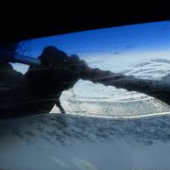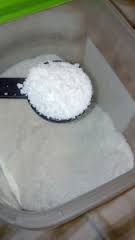Winter Salt Stains
As we get ready for another winter storm. It is important to get ready for the eventual clean up. Now we all know that salt keeps snow from freezing to the driveway and sidewalks, but it can create devastation on your clothes and floors. Treating roads and sidewalks with salt and deicers helps us slog through the winter weather. When cleaning up that salt shouldn’t involve products or dry-cleaning services that are full of potentially toxic chemicals.
Here’s a more natural approach on cleaning it all up:
Floors: Salt crystals are like sandpaper underfoot, dulling a floor’s surface or destroying a finish. And once the surface is affected, the underlying materials can be harmed or stained by water and other foreign matter that soaks in.
Right away remove water drops that may contain salt. For that, I keep a Sponge-type mop handy, outfitted with rectangles of old terry-cloth towel, which I can wash and reuse.
To pick up salt which has dried onto floors without damaging the finish, spray the floor with warm water, or water mixed with a touch of vinegar. Let the liquid sit for a minute or so, and wipe it with a dry towel on your mop.
 Cars: Dried road salt and deicer stains looks terrible, and can damage your car. Start by wiping off spots and thin coatings with a soft cloth soaked in water or a solution of half water and half vinegar. In the event that your car is just too dirty to spot-clean, take it to a car wash rather than washing the car in your driveway.
Cars: Dried road salt and deicer stains looks terrible, and can damage your car. Start by wiping off spots and thin coatings with a soft cloth soaked in water or a solution of half water and half vinegar. In the event that your car is just too dirty to spot-clean, take it to a car wash rather than washing the car in your driveway.
Clothing: Anything that’s weather-resistant, like snow boots or water-resistant jackets, can be wiped clean a soft cloth dipped in water or a water/vinegar mix (experimentation with different amounts; start with 1 tablespoon of vinegar in a quart of water, and gradually add more vinegar only if needed). Wipe them clean with a dry cloth. Everything else, just let the salt dry and then brush it off, an inexpensive hairbrush with soft bristles will do the trick. Make sure ahead of time that any mud is completely dry. If the mud is ground into the material, start by brushing off what you can, and then throw the item into the laundry. If washing is not an option, sponge the dirty areas with a moist cloth, and wipe off the dirty water with a dry cloth. Try a water-vinegar mixture if plain water doesn’t do the trick.
Leather: To protect leather shoes it’s a good idea to clean it off quickly. Dip a clean, rag in a one-to-one solution of water and vinegar and wipe off salt or dirt. Saddle soap is also effective for cleaning leather, and is usually made from natural ingredients. Work the saddle soap onto a moist sponge then apply it to the leather in a circular motion, and dry with a cloth.
If you can’t find saddle soap, make your own by melting two tablespoons of beeswax in a short, wide-mouthed Mason jar set in a saucepan of simmering water. After the wax has melted, remove the jar from the water and stir in half cup of olive oil until blended, and stir in 1 cup of grated castile soap and quarter teaspoon tea tree oil until blended (the oil is optional, but it offers some protection from mold, plus it smells nice). Store covered at room temperature.
Suede: To remove mud or salt stains out of suede, blot the suede piece with a cloth dipped in pure white vinegar then blot the material until dry using a dry cloth. Subsequently, brush the suede with a clean terry-cloth towel or soft suede brush in circular motions, till the fabric looks clean and new.




